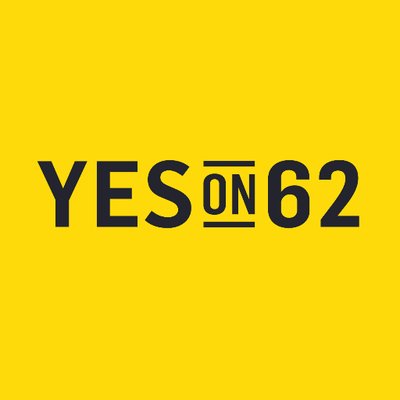If someone were to ask you to provide a definition of three terms, specifically, stereotype, prejudice and discrimination, what would you say? How would you respond? What language would you use? Would you phrase your response in a positive or negative light? Most importantly, would you be able to effectively differentiate these three terms? It can certainly be argued that society has come a long way with respect to all three but the unfortunate truth is that they all still exist today. But, going back to the original question, what do they actually mean and why do they matter?
In order to grasp the purpose of this post, you need to know the definition of the above terms. A stereotype is a belief held by an individual, about certain characteristics or behaviors for members of a specific group (Schneider, Gruman, & Coutts, 2012). Prejudice can be described as an attitude towards someone else based on specific group membership; when that attitude becomes an actual behavior towards another, it is referred to as discrimination (Schneider et al., 2012). For example, a stereotype regarding gay men is that they are all sexually promiscuous. An example of prejudice is when people say that they dislike all gay men because they are sexual predators. Discrimination can then occur when gay men experience negative insults or slurs based upon these common misconceptions.
The examples provided above are not just based upon observation; instead, they are all things that I have directly experienced throughout the last 10 – 15 years. Truthfully, I had never realized that I was the victim of discrimination until after high school. Looking back, it is easy to pick out examples of some truly unfortunate behaviors towards me. As the years have passed though, I have seen a decline in the amount of direct discrimination towards myself and others; however, it is still prevalent enough to warrant a discussion, specifically regarding workplace discrimination of LGBT individuals. Some people seem to be under the false understanding that LGBT individuals no longer face workplace discrimination, but the following statistics and studies paint a much different picture.
First, one in four LGBT employees reported experiencing employment discrimination in the last five years; the transgender unemployment rate is three times higher than the national average; nearly one in 10 LGBT employees have left a job because the environment was not welcoming; eight percent stated that this discrimination made their work environment negative and even worse, one in four LGBT adults struggled to put food on the table (Out & Equal Workplace Advocates, 2017). It is true that some states protect LGBT individuals within the workplace, but there is currently no federal law that prevents employment discrimination on the basis of sexual orientation or gender identity (Stern, 2015). In other words, there is no true consistency when it comes to protection for LGBT individuals. Some wonder how the EEOC can believe sexual orientation to already be illegal, without a true federal law. The short response is that it all relates to interpretation of Title VII of the Civil Rights Act of 1964; the EEOC believes it protects LGBT individuals, the current Department of Justice disagrees (Riotta, 2017) and the Supreme Court has refused to consider a case to make a final determination (Wolf, 2017). So why does this matter and what types of discrimination can occur?
András Tilcsik (2011) demonstrated that gay men encounter barriers in a hiring process because employers will more readily disqualify openly gay applicants than equally qualified heterosexual applicants. Additionally, gay job applicants were 40% less likely to be offered a job interview. Geographic variation was also found to be very high, with some states in the southern and midwestern U.S. showing strong discrimination practices and those in the western and northeastern states showing little discrimination (Tilcsik, 2011). Badgett, Sears, Lau and Ho (2009) demonstrated, by examining 10 years of data, that sexual orientation-based discrimination and gender identity discrimination was a common workplace practice in many areas across the country. Additionally, gay men were shown to earn approximately 10% – 32% less than heterosexual men and findings show that employers, sales clerks and some outside observers have treated LGB applicants or customers differently than heterosexuals (Badgett, Sears, Lau, & Ho, 2009).
In a more recent study, 37 percent of LG individuals had experienced workplace harassment during the previous five years, 12 percent had lost their job because of sexual orientation and 33 percent refused to be open about their sexuality within the workplace (Pizer, Sears, Mallory, & Hunter, 2012). Some people argue that they would prefer not to hear about sexuality in the workplace anyway, which is completely fair and understandable; however, the problem arises with the inevitable relationship discussions or common workplace banter. In having been in those situations, it may seem easy to simply ignore those questions or ask that they not be discussed but you then run the risk of being ostracized or being labeled as cold and rude.
There is no dispute of the fact that there have certainly been improvements relative to workplace acceptance of LGBT individuals. However, these improvements are not equally spread or applied in a consistent manner. Worse yet, even with some of these protections, levels of experienced discrimination still run high enough to warrant change. That said, the purpose is not to force a particular agenda; rather, the purpose is to provide awareness, especially given that stereotypes, prejudiced behavior and discrimination are very much still in existence. The question then is how can we go about helping to reduce this discrimination? What interventions can be implemented to ensure that we are providing a more equal and welcoming atmosphere? And if it may seem that these questions are of little importance, I can assure you that having been in some of these situations, you would certainly not want to be in them for yourself.
References
Badgett, M. V. L., Sears, B., Lau, H. S., & Ho, D. (2009). Bias in the workplace: Consistent evidence of sexual orientation and gender identity discrimination 1998-2008. Retrieved from http://scholarship.law.unc.edu/cgi/viewcontent.cgi?article=1186&context=faculty_publications
Out & Equal Workplace Advocates. (2017). 2017 Workplace Equality Fact Sheet. Retrieved from http://outandequal.org/2017-workplace-equality-fact-sheet/
Pizer, J., Sears, B., Mallory, C., & Hunter, N. D. (2012). Evidence of persistent and pervasive workplace discrimination against LGBT people: The need for federal legislation prohibiting discrimination and providing for equal employment benefits. Loyola Law Review Los Angeles, 45(3), 715-779. Retrieved from https://escholarship.org/uc/item/3wf4t3q9#main
Riotta, C. (2017, September). Trump administration says employers can fire people for being gay. Newsweek. Retrieved from http://www.newsweek.com/trump-doj-fired-being-gay-lgbt-issues-jeff-sessions-673398
Schneider, F. W., Gruman, J. A., & Coutts, L. M. (2012). Applied Social Psychology: Understanding and Addressing Social and Practical Problems (2nd ed.) Thousand Oaks, CA: SAGE Publications, Inc.
Stern, M. J. (2015, July). EEOC rules workplace sexual orientation discrimination already illegal under federal law. Slate. Retrieved from http://www.slate.com/blogs/outward/2015/07/16/sexual_orientation_discrimination_at_work_eeoc_says_it_s_illegal_under_federal.html
Tilcsik, A. (2011). Pride and prejudice. Employment discrimination against openly gay men in the United States. American Journal of Sociology, 117(2), 586-626. doi: 10.1086/661653
Wolf, R. (2017, December 11). Supreme Court won’t hear LGBT job discrimination case. USA Today. Retrieved from https://www.usatoday.com/story/news/politics/2017/12/11/supreme-court-wont-hear-lgbt-job-discrimination-case/940028001/







